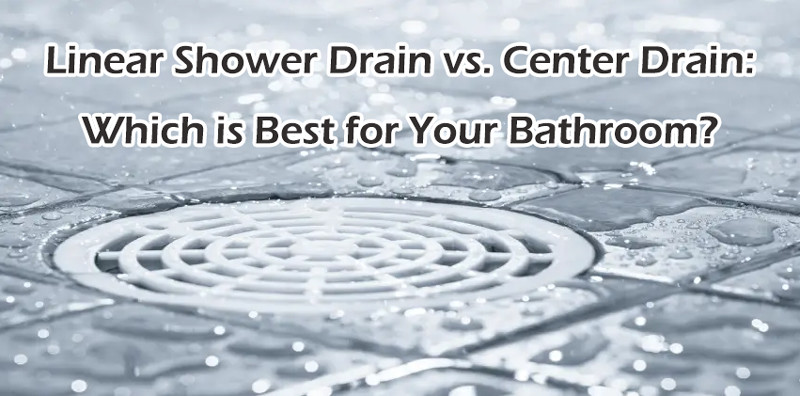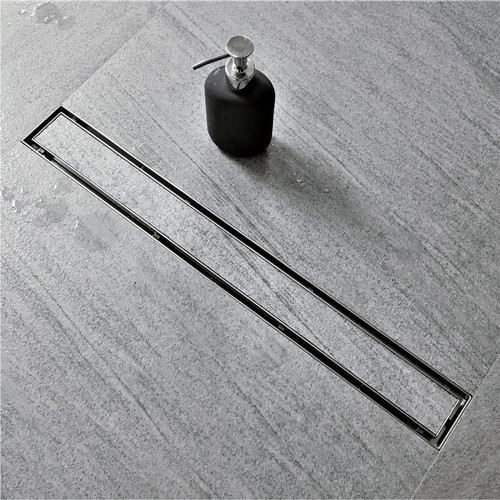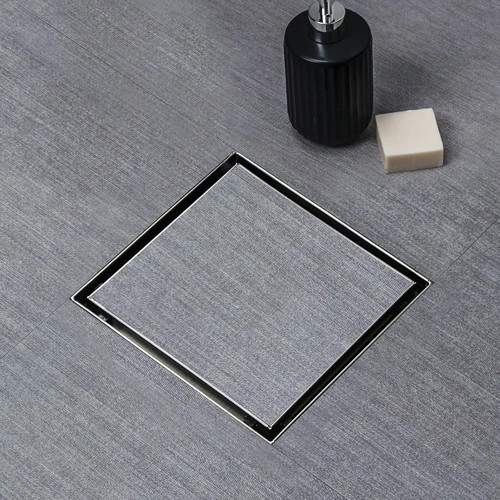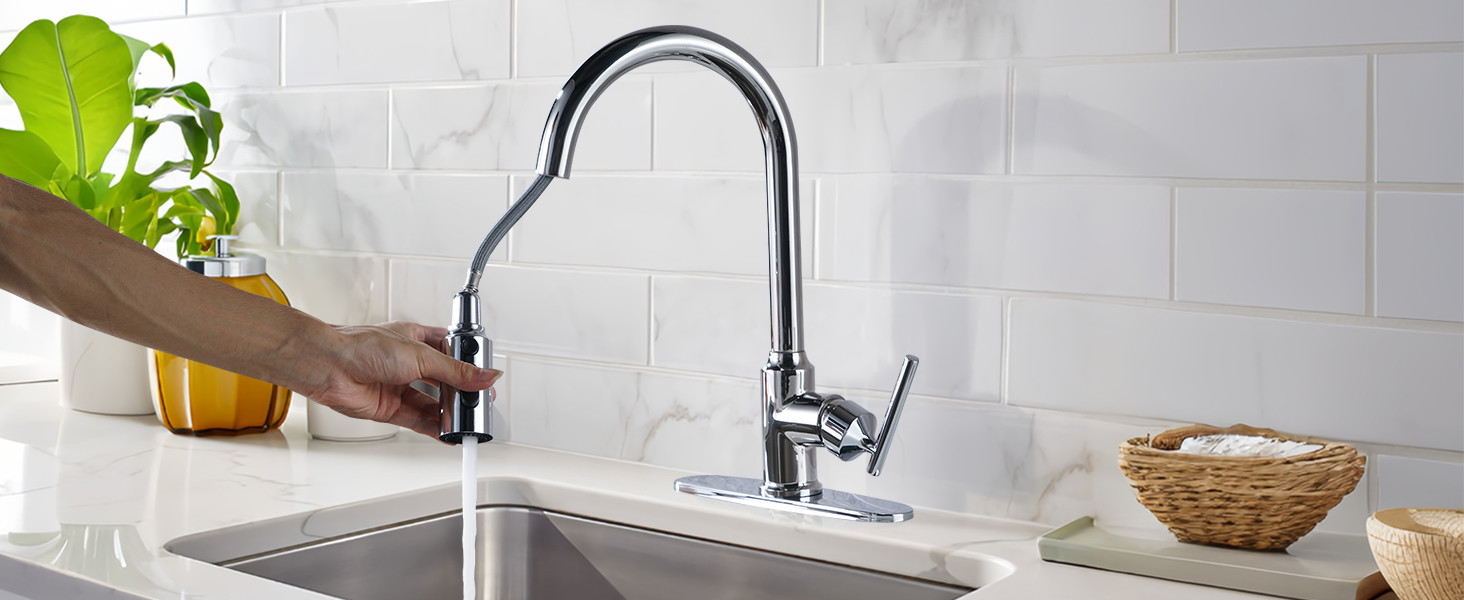
When designing or remodeling a bathroom, choosing the right shower drain is more important than most people realize. Drains are essential for controlling the flow of water and ensuring that your shower area remains dry and functional. The two most common types of drains found in showers are the linear shower drain vs center drain. While both serve the same basic purpose, they differ significantly in terms of aesthetics, installation, and functionality. This post will help you weigh the pros and cons of each option, so you can make an informed decision for your next bathroom project.
What is a Linear Shower Drain?
A linear shower drain, also known as a trench drain, is a long, narrow drain that typically runs along one side of the shower. It consists of a rectangular channel covered by a removable grate, allowing water to flow over the surface and into the drain.
Linear drains are sleek, modern, and often preferred in contemporary bathroom designs. They can be installed in various configurations—along the shower wall, at the entrance, or even in the center of the shower floor. Due to their versatile design, linear drains can create a smooth, almost invisible finish that complements minimalist and modern aesthetics.
What is a Center Drain?
A center drain is the traditional type of drain found in most showers. It is round and located in the middle of the shower floor. As the name suggests, it collects water from all directions as the floor slopes gently toward the center. Center drains have been a staple in residential bathrooms for decades and are compatible with a variety of floor materials, including tile, stone, and fiberglass.
Center drains are simpler in terms of installation and work well in a wide range of shower designs. However, they do require a multi-directional slope in the shower floor, which can sometimes complicate the tiling process.
Key Differences Between Linear Shower Drain vs Center Drain
Now that we’ve outlined the basic concepts of linear and center drains, let’s dive deeper into the key factors that differentiate these two options.
1. Aesthetics
One of the primary reasons homeowners and designers choose a linear shower drain is its modern and streamlined appearance. Unlike center drains, which break up the visual symmetry of the shower floor, linear drains can be positioned flush against a wall, creating a seamless look. This is especially desirable in high-end or minimalist bathrooms, where a clean, uninterrupted surface is a key design feature.
Linear drains can be custom-made to match the exact width of your shower, giving you a continuous, sleek line from wall to wall. Many models also allow for the drain cover to be tiled over, making the drain almost invisible.
On the other hand, center drains offer a more traditional appearance. They tend to blend into the center of the floor and are often covered by round or square grates that come in various finishes like chrome, brushed nickel, or matte black. Center drains are more visible but can still be designed to complement your bathroom style.
2. Installation and Slope Requirements
Linear drains are more complex to install because they typically require a single-direction slope in the shower floor. Instead of sloping toward the center, the floor is angled toward the drain, which can be installed along a wall or at the edge of the shower. This single-direction slope is easier to achieve when using large-format tiles, as fewer cuts are required.
Center drains require a multi-directional slope that angles toward the middle of the shower. This type of slope may be harder to execute with large tiles, as they will need to be cut to fit the contours of the floor. However, center drains are generally more straightforward to install, especially if you’re retrofitting a drain in an existing shower. Center drains also require less floor reconfiguration in renovations.
3. Water Drainage and Flow
Linear drains have a much larger surface area for water to flow through, which means they can handle higher volumes of water, making them ideal for large, open showers or showers with rainfall or multiple shower heads. They are designed to minimize standing water, ensuring that the entire floor stays dry and preventing water from pooling. This can be especially helpful in curbless showers, where water drainage is critical to prevent overflow into the rest of the bathroom.
Center drains, while functional, may not be as efficient at handling high volumes of water. Water must travel from the edges of the shower to the center, which can sometimes result in pooling around the edges, particularly if the slope isn’t well executed. For smaller, more enclosed showers, a center drain is typically adequate. However, for larger showers or those with high water output, a linear drain may provide better water management.
4. Cost
Linear drains are typically more expensive than center drains, both in terms of material costs and installation. Custom linear drains can range in price depending on the length and material. Installation can also be pricier because the shower floor needs to be precisely sloped in one direction, and extra care must be taken to waterproof the surrounding area.
Center drains are more affordable and widely available. The cost of materials and installation is typically lower, as the traditional center drain design is easier to implement and doesn’t require as much customization. For homeowners on a budget, a center drain might be the more economical option.
5. Maintenance
Both types of drains require routine cleaning to prevent clogs, but linear drains may require more attention. Because of their longer surface area, linear drains can accumulate more debris, such as hair and soap scum. The grate must be removed periodically to clean the inside channel.
Center drains are easier to maintain since they are smaller and more accessible. Most debris collects around the small grate, which can be quickly removed and cleaned.
Which One Should You Choose?
Ultimately, the choice between a linear shower drain and a center drain depends on your aesthetic preferences, budget, and shower layout.
- If you’re going for a sleek, modern look and don’t mind the extra cost and installation complexity, a linear drain is an excellent choice.
- If you prefer a traditional, affordable option that’s easier to install and maintain, a center drain will suit most shower designs.
For those looking to make a statement with a high-end bathroom remodel, the linear drain offers a contemporary, luxurious appearance. However, for standard shower setups, the classic center drain remains a reliable and cost-effective option.
Ultimately, both types of drains serve the same fundamental purpose—it’s just a matter of style, installation considerations, and personal preference.
 WOWOW Faucets
WOWOW Faucets







您好!Please sign in